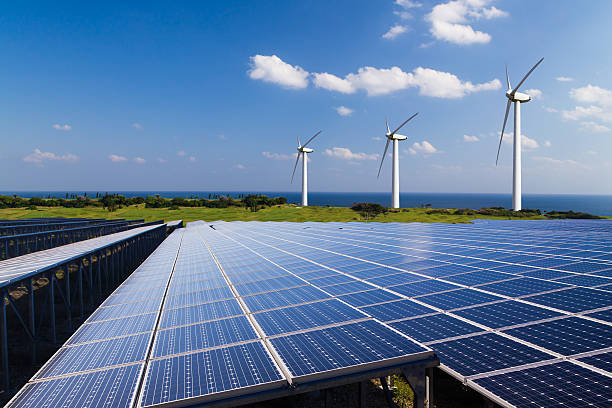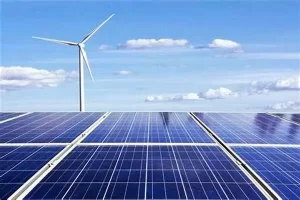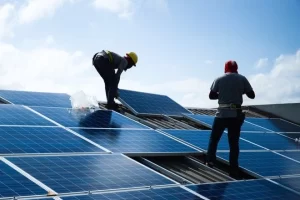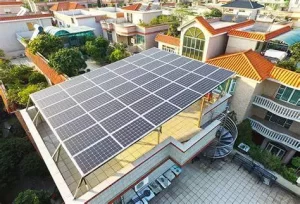Exploring Total Green Energy Solutions: A Path to a Sustainable Future
As the world grapples with climate change and dwindling natural resources, the need for sustainable energy solutions has never been more critical. One of the most promising approaches to achieving a greener, more sustainable future is the concept of a total green energy solution. This comprehensive strategy not only reduces our reliance on fossil fuels but also integrates various renewable energy sources to create a more resilient and eco-friendly energy system. In this blog post, we will delve into what makes a total green energy solution so effective and how it can shape the future of our planet.
What is a Total Green Energy Solution?
A total green energy solution is a holistic approach to energy production and consumption that emphasizes the use of renewable resources while minimizing environmental impact. Unlike piecemeal or partial solutions, this strategy integrates multiple forms of green energy, such as solar, wind, hydro, and geothermal, to create a well-rounded and sustainable energy system. By doing so, it addresses various energy needs and reduces dependence on non-renewable resources.
The Components of a Total Green Energy Solution
Solar Energy: Solar power harnesses the sun’s energy through photovoltaic panels or solar thermal systems. It’s one of the most widely adopted green energy solutions due to its scalability and decreasing costs. Solar panels can be installed on rooftops, in open fields, or even integrated into building materials, making it a versatile option for many applications.
Wind Energy: Wind turbines convert kinetic energy from the wind into electricity. Wind farms, both onshore and offshore, are becoming increasingly common as technology advances and efficiency improves. Wind energy is a crucial component of a total green energy solution due to its ability to generate large amounts of power with minimal environmental impact.

Hydro Energy: Hydropower utilizes the energy from flowing water to generate electricity. It can range from large-scale dams to small run-of-river systems. While it is a reliable and consistent source of green energy, it’s essential to carefully consider environmental impacts, such as effects on local ecosystems and fish populations.
Geothermal Energy: This form of energy harnesses heat from the Earth’s core. Geothermal power plants can provide a continuous, stable energy source that is not affected by weather conditions. It’s particularly effective in regions with high geothermal activity but can be a valuable component in various locations.
Biomass Energy: Biomass involves the use of organic materials, such as plant and animal waste, to produce energy. It can be converted into biofuels, like ethanol or biodiesel, or used directly for heating. Biomass is a versatile energy source that can help reduce waste and provide a renewable alternative to fossil fuels.
Benefits of a Total Green Energy Solution
Environmental Impact: The primary advantage of total green energy solutions is its minimal environmental footprint. Renewable energy sources produce little to no greenhouse gases compared to fossil fuels, helping to combat climate change and reduce air pollution.
Energy Security: By diversifying energy sources, a total green energy solution enhances energy security. Relying on multiple forms of renewable energy reduces vulnerability to supply disruptions and price volatility associated with fossil fuels.
Economic Growth: Investing in green energy infrastructure can stimulate economic growth by creating jobs in manufacturing, installation, and maintenance. Additionally, as technology advances, the cost of renewable energy continues to decrease, making it an increasingly attractive option for consumers and businesses alike.
Sustainable Development: total green energy solutions support sustainable development by balancing energy needs with environmental stewardship. It ensures that future generations have access to clean and reliable energy while preserving natural resources and ecosystems.
Implementing a Total Green Energy Solution
Transitioning to a total green energy solution involves several steps. It begins with assessing energy needs and evaluating which renewable resources are most suitable for a given location. Engaging with experts and investing in the right technologies are crucial to creating an efficient and effective energy system.
Governments, businesses, and individuals all have roles to play in this transition. Policy support, such as subsidies and tax incentives, can accelerate the adoption of green technologies. Businesses can integrate renewable energy into their operations, and individuals can contribute by installing solar panels or choosing green energy options from their utility providers.
The Future of Total Green Energy Solutions
The future of energy lies in the comprehensive adoption of total green energy solutions. As technology advances and more people recognize the importance of sustainable practices, we can expect to see increased integration of renewable energy sources. This shift will not only help mitigate climate change but also promote a more equitable and sustainable world.
In conclusion, embracing a total green energy solution is essential for building a sustainable future. By leveraging various renewable resources and reducing our reliance on fossil fuels, we can create a cleaner, more resilient energy system that benefits both people and the planet. The transition to green energy may require effort and investment, but the long-term rewards will be well worth it.
By understanding and implementing total green energy solutions, we take a significant step toward a more sustainable and harmonious relationship with our environment.
Contact us
- Email:[email protected]
- Tel: +86 13651638099
- Address: 333 Fengcun Road, Fengxian District, Shanghai
Get A Quote Now!
Related product links are available directly
Site storage products:Site storage products 归档 – (energystoragecontainer.com)
Lithium Battery:Lithium Battery 归档 – (energystoragecontainer.com)
Read more

Unveiling Photovoltaic+Energy Storage: Four Major Application Scenarios Leading the Future of Energy
In this way, the energy landscape is evolving, and one of the most thrilling developments in renewables is the integration of photovoltaics energy storage.

From Theory to Practice: Four Methods for Estimating Photovoltaic Power Generation
Photovoltaic power generation has become an essential part of modern energy solutions, particularly in home solar systems and distributed power applications

Rack-Mounted Lithium Iron Batteries: Creating Efficient and Reliable Energy Storage Solutions
When it comes to modern energy solutions, rack-mounted lithium iron batteries are taking center stage in a variety of industries. Whether you’re powering data centers, stabilizing energy for households, or keeping critical systems online at 5G base stations, these batteries have become the unsung heroes of our electrified world.

Late Night Energy Saving Tips: How to Maximize Electricity Savings During Off-Peak Hours
With rising energy costs, homeowners are increasingly exploring innovative ways to save on their electricity bills. One effective approach is utilizing off-peak hours—times when electricity rates are significantly lower due to reduced demand.
